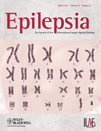Video-EEG monitoring: Safety and adverse events in 507 consecutive patients
Summary
Purpose: Video–electroencephalography (EEG) monitoring plays a central role in the presurgical evaluation of medically refractory epilepsies and the diagnosis of nonepileptic attack disorders (NEADs). The aim of this study was to analyze safety and adverse events (AEs) during video-EEG monitoring.
Methods: We retrospectively evaluated 596 video-EEG sessions in 507 patients (233 men, mean age 36 years, standard deviation = 14, range 9–80 years) within a 6-year period. AEs were examined in detail and their risk factors were assessed using multiple logistic regression analysis.
Key Findings: Forty-four patients (9%) experienced 53 AEs: 20 had psychiatric events (17 postictal psychosis, 2 panic attacks, 1 interictal psychosis), 15 had injuries (14 falls with minor injuries, 2 falls with fractures, 2 fractures without fall, 1 fall with epidural hematoma), 10 patients had 13 episodes of status epilepticus (SE), and one AE was treatment-related (valproic acid – induced encephalopathy). Patients with AEs were older (p = 0.036) and had a longer duration of epilepsy (p = 0.019). All AEs resulted in a prolonged hospital stay (p < 0.001). Ninety-one percent of the AEs occurred within the first 4 days of monitoring. Independent risk factors were duration of epilepsy >17 years [odds ratio (OR) 3.096; 95% confidence interval (CI) 1.548–6.189], a previous history of psychiatric illness (OR 16.882; 95% CI 5.469–52.110), a history of seizure-related injuries (OR 3.542; 95% CI 1.069–11.739), or a history of SE (OR 3.334; 95% CI 1.297–8.565).
Significance: The most common AEs were postictal psychosis, falls, and SE. Patients with an older age, long disease duration, psychiatric comorbidity, history of injuries, and SE have a higher risk.




